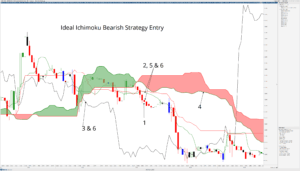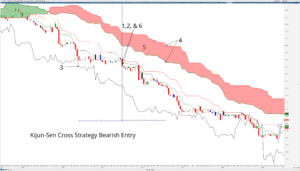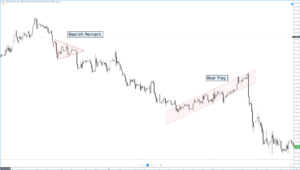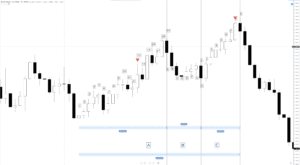Ichimoku Kinko Hyo Guide – A walk through a trade.
I want to preface this guide with a screenshot of my account.
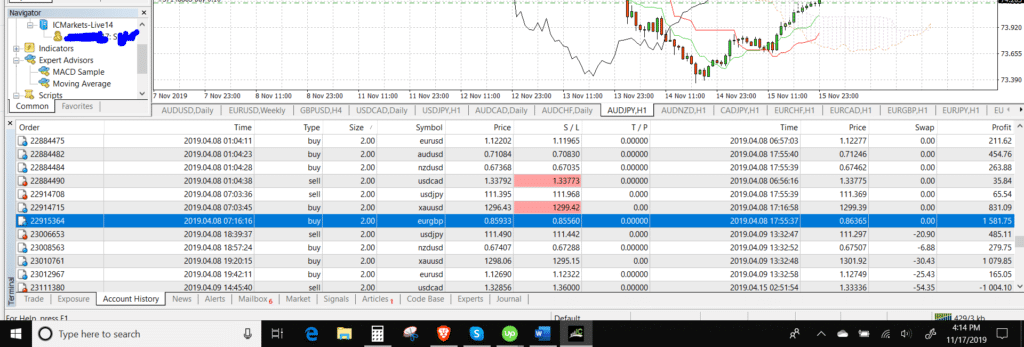
The screenshot is a series of some of the trades I’ve made in early April 2019. I do this because this guide on trading with Ichimoku will target the trade that is highlighted. Additionally, I think it is important that if I am showing you an example of a trade for a guide, I should show that I had skin in the game. There are a great many guides and strategies that authors, analysts, and traders suggest, but few will share if they took the trade. The highlighted trade for the EURGBP is the trade I will be using for this guide. It is a great example of the trading methodology I use with the Ichimoku System.
Multiple Timeframe Analysis – Daily, 4-Hour, and 1-Hour
The Ichimoku Kinko Hyo system is most effective when utilizing multiple timeframes. It is the only way that I use the Ichimoku system. In my trading, I use the Daily, 4-hour, and 1-hour time frames. Multiple timeframes are extremely useful in filtering your trade entries and ensuring higher probability trade setups. The process below will go through the process I used to take the trade.
Step One – Daily Chart Check: Price greater than Kijun-Sen, NOT inside the Cloud.
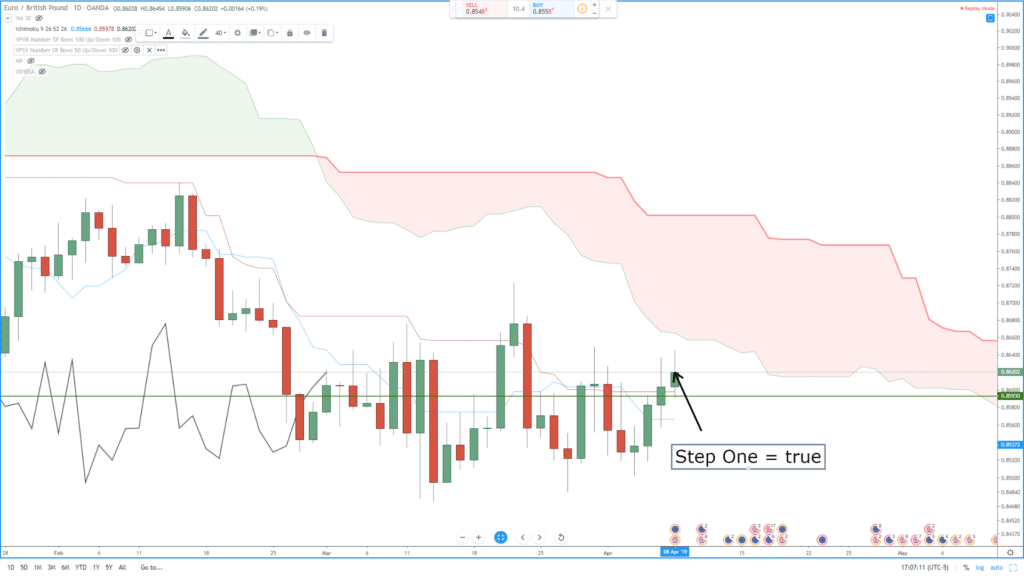
The very first thing I check is the daily chart. If the price is inside the Cloud on the daily chart, I skip the chart. It’s dead to me. If the price is not inside the Cloud, I then look for where the price is in relation to the Kijun-Sen. The daily chart determines my trading direction. If the price is above the Kijun-Sen, I only take long trades. If the price is below the Kijun-Sen, I only take short trades.
Step Two – 4-Hour Chart Check: Price above the Cloud, Chikou Span above candlesticks.
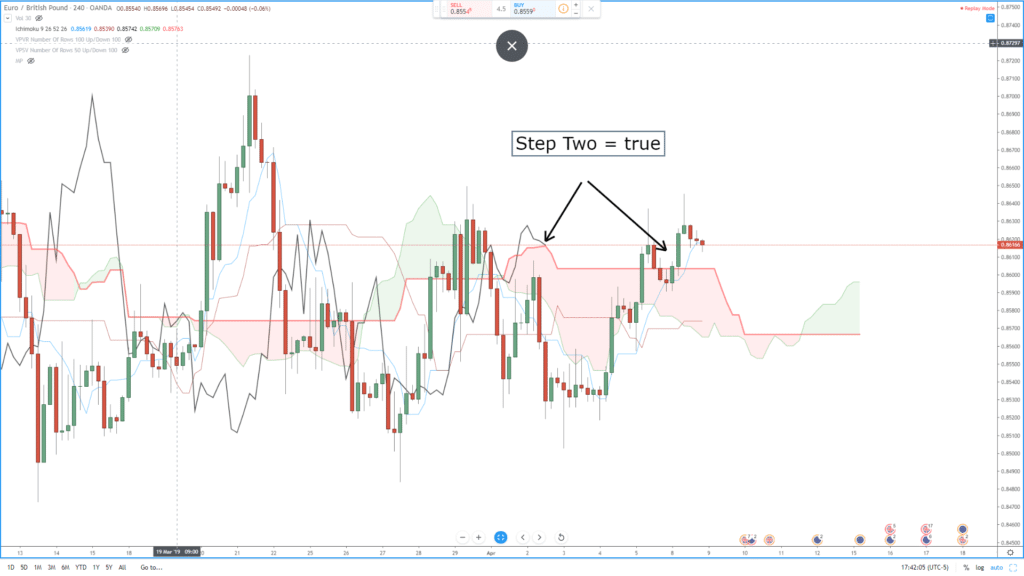
If the daily chart determines the direction of my trading, the 4-hour provides the filter for the entry chart (the 1-hour chart). The only things I am concerned about with the 4-hour chart is that the Chikou Span is above the candlesticks, and that price is above the Cloud. Preferably, the Chikou Span would also be in ‘open space’ – but I don’t use it as a hard rule. I have not found the open space to be as important during the change of a trend or corrective move.
(a note about ‘Open Space’ – Open Space is a condition where the Chikou Span won’t intercept any candlesticks over the next five to ten trading periods. When the Chikou Span is in open space, this represents ease of movement in the direction of the trend with little in the form of resistance (or support) ahead.)
The EURGBP trade we are analyzing is a good example of why, at the current position, I don’t consider the open space as strict as I would on the hourly. I want to refer you back to the daily chart. If, on the daily chart, both price and the Kijun-Sen are below the daily cloud, but price moves above the Kijun-Sen – I don’t consider the open space variable as important on the 4-hour chart.
Step Three – 1-Hour Chart Check
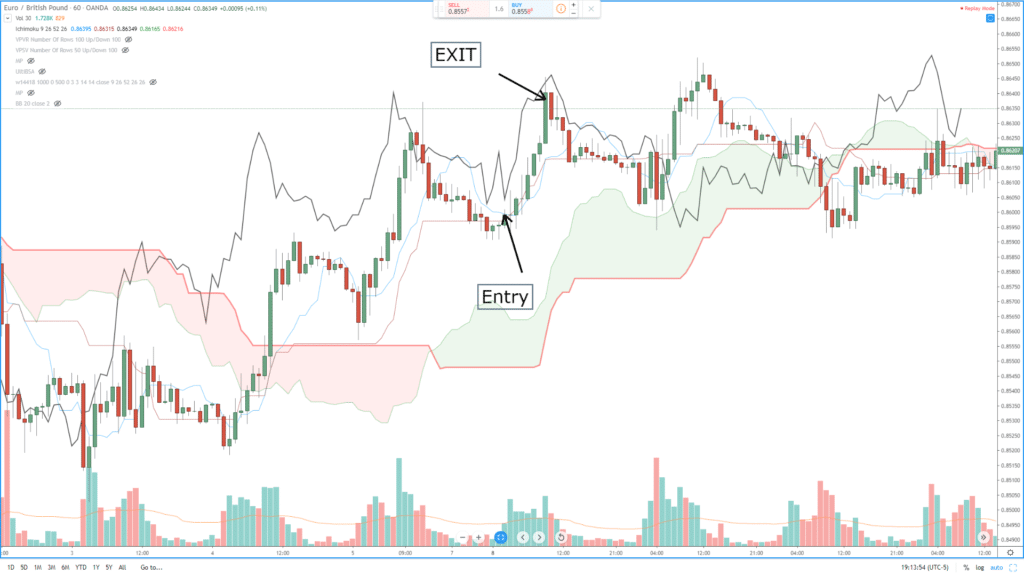
The 1-Hour chart is my entry chart. As long as Step One and Step Two are true, the 1-hour chart is where the bread and butter of the trading occurs. My entry rules are this:
- Future Span A is greater than Future Span B.
- Chikou Span above the candlesticks and in ‘open space’ – for five periods.
- Tenkan-Sen is greater than Kijun-Sen
- Price is greater than the Tenkan-Sen and Kijun-Sen.
I generally look for a profit target of 20-40 pips, depending on the FX pair. For example, on the NZDUSD, I would look for 20 pips, and on the GBPNZD, I would look for 40 pips. But there are some hard technical reasons to leave a trade before that profit target is hit. The list below represents my exit rules on the 1-hour Chart – I exit the trade if any of these conditions occur.
- Exit if Chikou Span below candlesticks for more than three consecutive candlesticks.
- Exit if price enters the 1-hour Cloud.
- Exit if Tenkan-Sen below the Kijun-Sen for more than five candlesticks.
Step Four – Reentry Rules
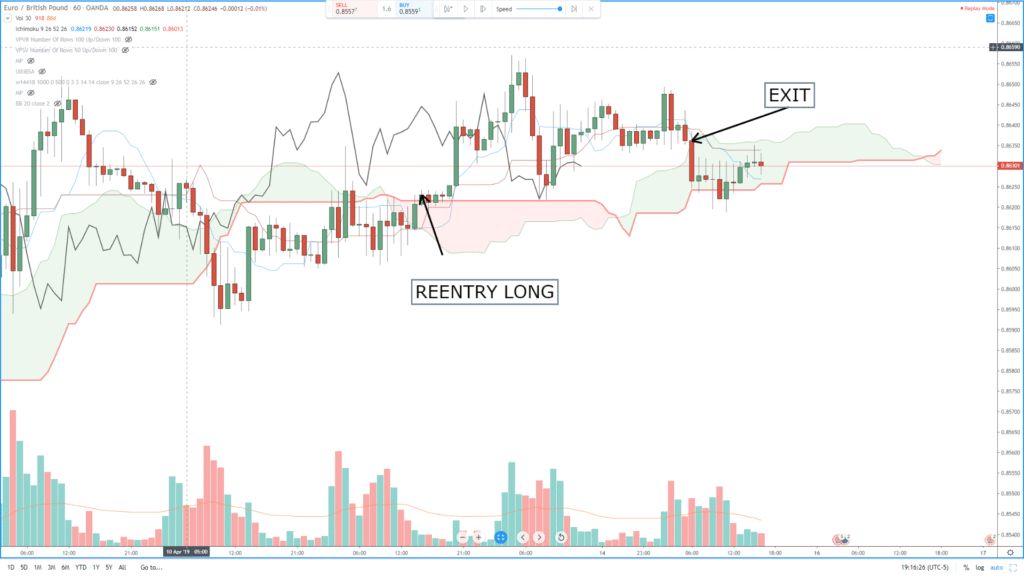
Entry rules are fine, but the problem isn’t always finding the entry. One of the hardest problems is creating rules for re-entering a trade. Mine are as follows:
- Tenkan-Sen and Kijun-Sen must be above the Cloud.
- Chikou Span above the candlesticks.
- Price greater than Kijun-Sen and Tenkan-Sen.
A quick summary of steps taken
- Checked the daily chart, the price was above the daily Kijun-Sen. The trade direction is long/buy.
- Check the 4-hour chart, the price was above the Cloud, and the Chikou Span was above the candlesticks.
- All 1-hour rules confirmed an entry; profit taken at 40 pips.
- Re-entered trade on 1-hour chart, exited when price entered the 1-hour Cloud.
Sources: Péloille, Karen. (2017). Trading with Ichimoku: a practical guide to low-risk Ichimoku strategies. Petersfield, Hampshire: Harriman House Ltd.
Patel, M. (2010). Trading with Ichimoku clouds: the essential guide to Ichimoku Kinko Hyo technical analysis. Hoboken, NJ: John Wiley & Sons.
Linton, D. (2010). Cloud charts: trading success with the Ichimoku Technique. London: Updata.
Elliot, N. (2012). Ichimoku charts: an introduction to Ichimoku Kinko Clouds. Petersfield, Hampshire: Harriman House Ltd.


